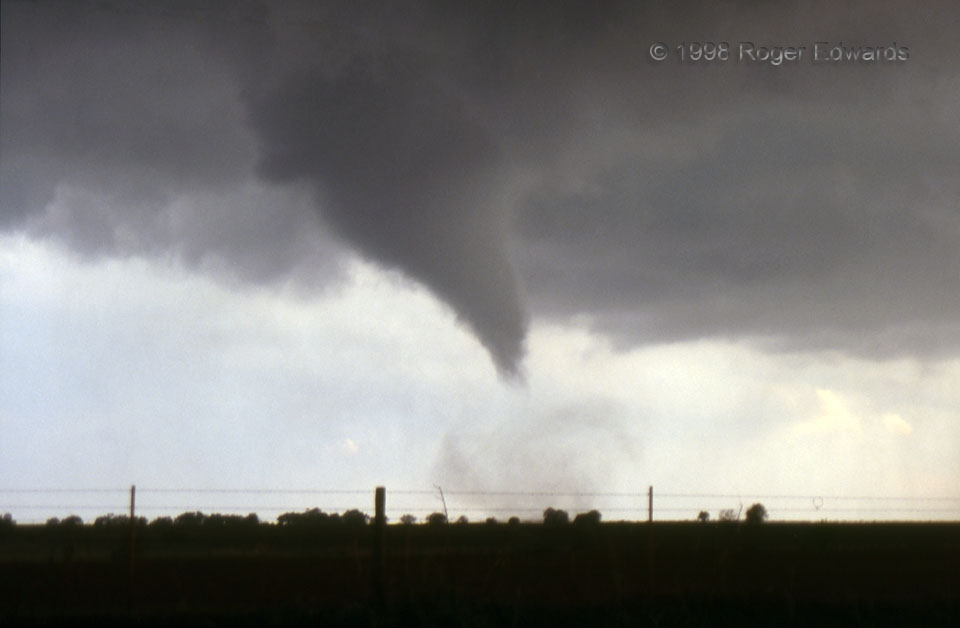The early-stage Dover tornado began to organize better, whipping up a frothy column of slightly wettened dust as it crossed a plowed field where light to moderate rain had fallen briefly. The bottom of the young vortex twirled slightly more than a mile away at this time, faintly audible as a distant waterfall noise, located to the southwest yet zipping along mostly eastward. In this strongly tilted supercell, the tornadic vortex hidden above cloud base probably was overhead, around 5,000-8,000 feet aloft. I looked up and around every few seconds, at the expense of shooting more slides, patrolling the very fluid cloud base for formation of satellite vortices that didn’t occur anymore. With no substantial rain nor hail apparent either at my location nor in the surrounding mesocyclone, no rear-flank surges into the back side that could kick the tornado in an unexpected direction, a steady-state storm motion amidst fast midlevel flow, no cloud-to-ground lightning in this part of the storm, and a known and fast, paved escape route, the typically dangerous northeastern vantage was relatively safe, in this particular situation. However, to get an uncommon north-to-south viewing angle on this autumn tornado, I was risking a future descending-core cascade on the back side. Fortunately, that never happened until after the supercell got past me.
5 WSW Dover OK (4 Oct 98) Looking SW
35.971, -97.9938
